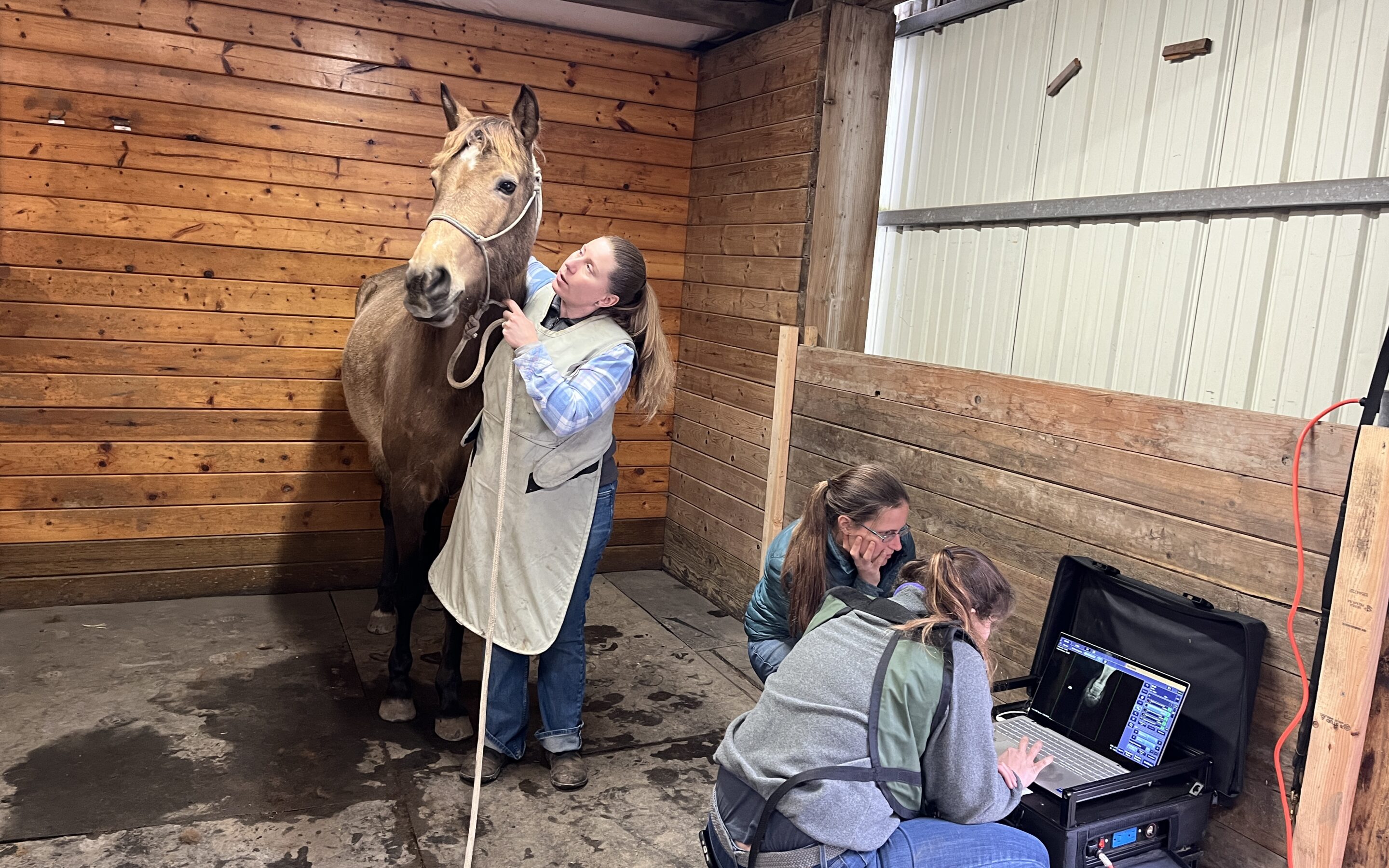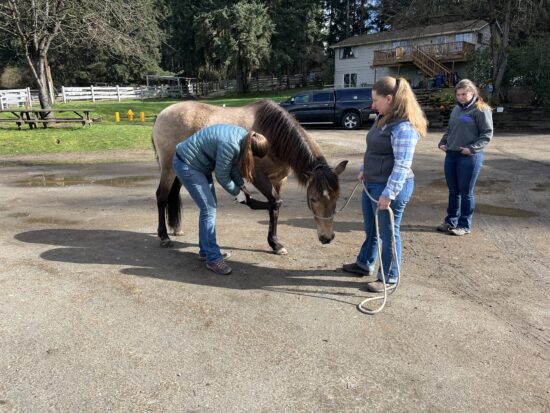Pop Quiz: your horse, who was sound as a music note yesterday, walks out of her stall with a major head bob the next morning. Do you:
A. PANIC! Something serious must be wrong, and the vet needs to come out immediately!
B. Treat it like an abscess — soak the foot in warm water and epsom salts, and slap that thing in a duct tape boot.
C. Do nothing. She’ll walk it off, right?
While it is never a bad idea to get in touch with your vet and/or farrier depending on the ailment, in our experience, a sudden onset lameness that presents at a walk is oftentimes indicative of a stone bruise or an abscess. We chose ‘B’ when this situation happened for Esme, who despite being perfectly sound the day before, was now displaying a head bob at the walk.
She was an absolute champion for the abscess treatment procedure, tolerating the 15 minute soak and subsequent doctoring of the foot in question (right front). The hoof wrap parfait consists of an epsom poultice, diaper, duct tape boot, and, if we can find a good fit, trail boot to maintain the integrity of the duct tape for more than a few hours. Abscesses can take a varied amount of time to blow, but typically you expect to see a horse who was Lame with a capital L one day be perfectly sound the next, sort of an opposite of how they come on. But after about a week of no real improvement, we decided that it was time for a pair of more professional eyes on the foot. We called our vets, and set an appointment to evaluate her for any additional lameness that we may have missed by treating it like an abscess.
The vets were out to do a partial lameness evaluation on Esme. While it was no longer super evident at the walk, the lameness was very apparent on a trot circle to the right. Flexions on the front limbs were not indicative of any additional lameness. We chose to block the right front, which resolved the lameness. We also chose to proceed with radiographs of the right front to see what was happening under the hood.
The answer? A deep gas pocket in her heel region that indicates an abscess. We also were able to see her sole depth, which was a little less than 1cm (aka, very thin). Even though her feet are very hard, with a sole depth that thin she is still prone to hoof issues. Once her abscess blows, we will shoe her to help elevate the foot.
Because her foot is so hard, we kept it in an animalintex poultice pad for several days to help soften the hoof to make it easier for the abscess to blow. We have since switched over to the good ole fashioned epsom salt poultice. It’s deep, so it might take a while to surface, but in the meantime we are keeping her wrapped and waiting patiently for her soundness to return. We are also getting really good at duct tape boots!



